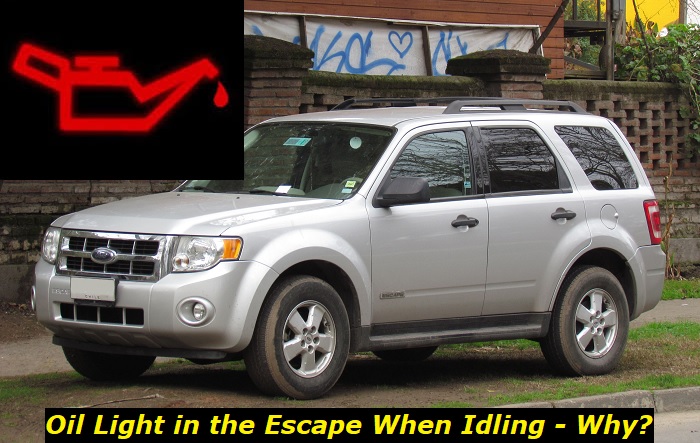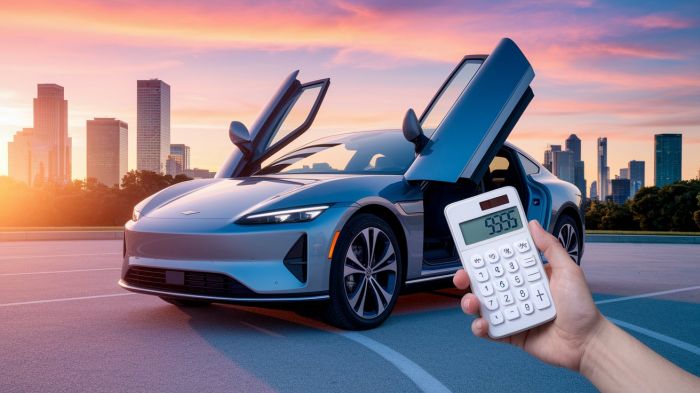Whenever you see the oil light in your vehicle, it's time to stop and make sure that everything is OK with the engine. Lubrication is the most important process in the engine and if it's not going well, things are bad. Your Ford Escape is a durable and overall great vehicle but you should pay attention to the engine health if you want to avoid expensive repairs.
Oil light highlights
- Common reasons:low oil level, poor oil pump, oil pressure sensor problem
- How to fix:check oil level, read the codes
- Possible consequences:engine failure
- Priority level:High
- Can you drive?No
- DIY repair:Possible
- Repair price range:$10-$250

Engines and years that are prone to oil light issues
First of all, I want to say that the oil light can go on the dash in any generation of the Escape powered by any engine. The light means that there is a problem with engine lubrication, so any car with an internal combustion engine may show this light on the dash. But the specific problem with the oil light going on when idling is common for older Escapes - 2004-2013.
These are the first two generations that shared common engines (2.3 and 3.0 Duratec series) and overall had a lot in common. The Duratec series of engines is actually very durable and doesn't cause as many problems as some new engines can cause. But it's not flawless.
I studied several popular forums and found out that the Ford Escape 2004-2008 has the majority of claims for oil light when idling. But I suppose this is because these cars are just pretty old and have a lot of miles on them. So, the next generation (2008-2013) will most likely be the same.
What does the oil light mean in your Escape?
Well, this light is designed to tell the driver about the potentially low pressure of oil in the engine. This is a serious thing that's why the light is red color and is often accompanied by error messages or at least chimes to draw the driver's attention to the problem.
This light means the following:
- engine sensors figured out that the pressure of oil is not high enough to lubricate the engine;
- this may immediately mean that the oil is not coming to the head of the engine;
- it happens when the engine is idling at first because once you add RPM, the oil pressure goes up thanks to the pump;
- after some time, the oil light may come on or stay on even when you drive;
- whatever happens, you shouldn't continue driving the vehicle with this problem.
The oil light will mean that the engine is poorly lubricated and it actually may die any moment. If you continue driving like that, the bearings may not survive. If they fail, the engine may get stuck and basically you will throw it away after diagnosing. Repairing such engines is not wise in terms of how much you will need to spend on labor and parts.
Why is the oil light on when the car idles?
The oil light comes on when idling because when the RPM is about 800, the oil pump doesn't work at its best. It doesn't create the needed pressure. When you press the gas pedal and the engine goes to 2000-3000 RPM, the oil pump also starts working more efficiently and makes the pressure of oil much higher.
But it will work only when the oil level is more or less OK. If there is no oil in the oil pan of your engine, however hard the oil pump tries, it will not create the pressure out of nothing.
Here's what happens in your Escape when the oil light is on when idling:
- there is certainly a problem with some of the oil supply systems with the level of oil - it may just be low;
- but still, there is oil in the system, so the pump can create pressure when it goes at a higher RPM;
- but when you stop at the red light, the car idles, and the pressure drops significantly, which means the light will go on again;
- this will continue up to the point when the oil supply system will fail to deliver the proper pressure and the light will stay on at all times.
It only means that driving your Escape in such conditions is not the best idea. There is no chance that the problem will disappear on its own. The worst thing you can try is to "fry" the engine at high RPM hoping that everything will be OK after that. If the engine is poorly lubricated, the last thing you want to do is to drive it at high RPM and with high loads.
This may kill the engine immediately, so it's important to know what to do in such cases. But first, let's see what can this problem lead to.
Consequences of the low oil pressure problem
So, what can this all lead to? First of all, the consequences depend on the initial problem. First, let's see what are the possible reasons for this issue:
- low oil pressure - the most common and obvious thing;
- bad oil pump - pretty possible in old and high-mileage engines;
- the wrong type of oil - the viscosity is important and the pressure may suffer when it's wrong;
- clogged oil passages - some tubes and passages are very thin and if they get clogged, the pressure can drop;
- contaminated oil - it changes its properties when dirty and can't lubricate the engine efficiently;
- serious leak - this may lead to immediate low pressure and also to a low level in the end.
The consequences of the wrong viscosity will not be the same as if the engine is running with no oil in its pan. But I can tell you about the most common consequences of poor oil pressure when idling.
Here they are:
- the rod bearings can get warped - they need constant lubrication when the engine works;
- pistons may start rubbing cylinders and leave scratches that will be fatal for the engine;
- all moving parts will overheat and may eventually fail because of this;
- engine head will overheat, the aluminum will expand a little and the valves may just get clogged;
- because of the problems with rod bearings, cam bearings, and valves, the engine may get stuck;
- in the end, all these consequences lead to one simple thing - the engine dies.
When the engine gets stuck, it can also cause several other serious problems like timing chain or belt issues, cracks in the head or block, problems with warping of cylinder walls, etc. If this happens, the wisest thing you can do is to just take the engine out of your Escape and throw it away. After this, you may search for a remanufactured or just used engine and install it in your car.
Unfortunately, repairs are so expensive that the final cost may be much higher than the actual price of the engine and even the residual value of your car.
What should you do immediately after you see the oil light?
The only time you should see the oil light on the dash is when you start the engine. It will stay on for several seconds to let you know that the oil pressure sensor is OK and ready to work. At all other times, the oil light should be off.
Once you see the light coming on the dash when the engine is idling, the best thing you can do is to stop the engine immediately.
After that, try doing the following:
- let the engine cool down for about 3-5 minutes;
- take out the dipstick and wipe it with a clean tissue, then reinsert the dipstick, take it out again, and check the oil level;
- if the level is low, add oil;
- if the level is OK, look at the condition of the oil on the dipstick - it shouldn't be too dark or too light, and shouldn't have any dirt in it;
- if everything seems to be OK, plan a visit to the dealership or to a good repair shop and have your car inspected.
If the oil level and condition of the lubricant are OK, you can drive to the repair shop on your own. But drive carefully. If there are problems with oil, avoid driving the car. You better pay a hundred or two and call the tow truck for help.
Final thoughts
Oil problems are pretty common for older Ford Escape vehicles with a lot of miles on them. But there is no exclusive problem with the Escape. This can happen to any car that has a fuel-driven engine under the hood.
You need to make sure that the engine is lubricated properly. If you see the oil light going on when the car is idling, something is wrong. Provide the vehicle with simple DIY checkups and then let professionals inspect the oil supply system to make sure that everything works well.
About the authors
The CarAraC research team is composed of seasoned auto mechanics and automotive industry professionals, including individuals with advanced degrees and certifications in their field. Our team members boast prestigious credentials, reflecting their extensive knowledge and skills. These qualifications include: IMI: Institute of the Motor Industry, ASE-Certified Master Automobile Technicians; Coventry University, Graduate of MA in Automotive Journalism; Politecnico di Torino, Italy, MS Automotive Engineering; Ss. Cyril and Methodius University in Skopje, Mechanical University in Skopje; TOC Automotive College; DHA Suffa University, Department of Mechanical Engineering






Add comment